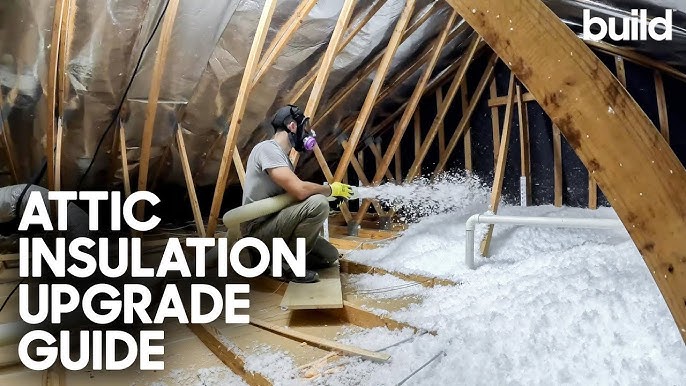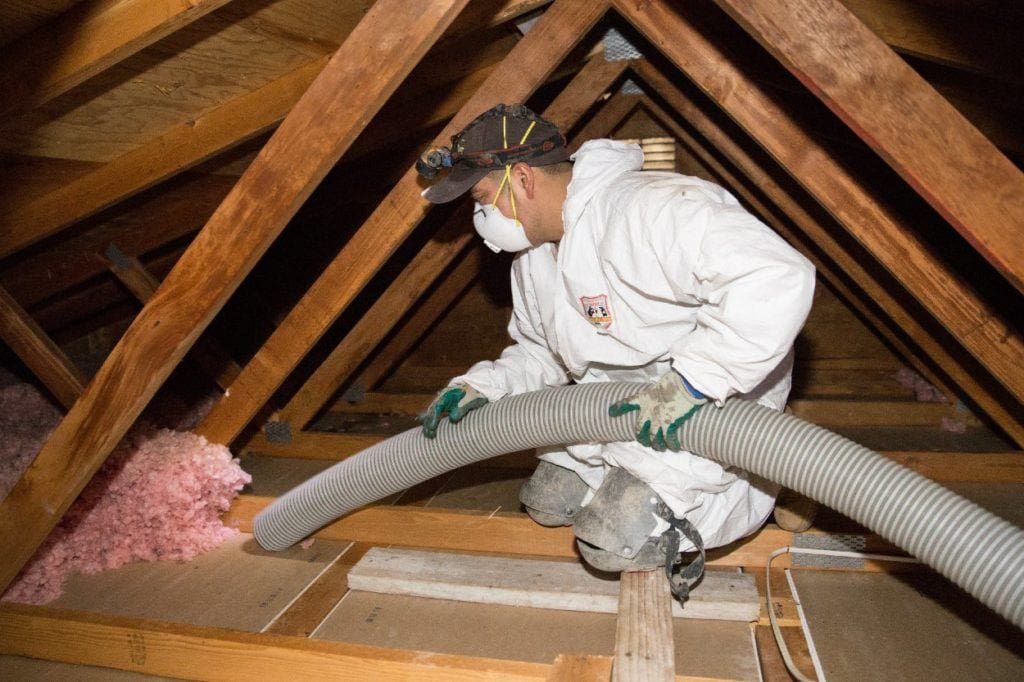Discover the Different Sorts Of Attic Insulation and Their Special Benefits for Your Home's Energy Effectiveness

Fiberglass Insulation
Fiberglass insulation is one of one of the most commonly utilized products for attic room insulation due to its exceptional thermal efficiency and cost-effectiveness. Made up of tiny glass fibers, this product properly catches air, developing a shielding barrier that helps preserve constant indoor temperature levels. Its high R-value per inch makes it especially effective at withstanding warm transfer, which is vital for power conservation in homes.
Installment of fiberglass insulation is fairly straightforward, usually readily available in batts or loose-fill forms, fitting numerous attic setups. Additionally, it is non-combustible and resistant to wetness, reducing the risk of mold growth. This longevity contributes to its long life, making fiberglass a feasible lasting financial investment for home owners.
Furthermore, fiberglass insulation is often manufactured from recycled materials, which improves its eco-friendliness. The material can also add to soundproofing, minimizing sound transfer between rooms. While it is vital to wear protective equipment during setup to stay clear of irritability from the fibers, the general benefits of fiberglass insulation, including power cost savings and environmental considerations, make it a preferred choice for improving attic room efficiency and advertising a comfortable living atmosphere.
Spray Foam Insulation
Spray foam insulation is a highly efficient option for attic room insulation, understood for its exceptional air sealing and thermal performance. This cutting-edge insulation product is made up of a mix of isocyanate and polyol material, which, when integrated, increases swiftly to fill spaces and tooth cavities in the attic room room. Its capacity to stick to different surface areas makes sure a continual barrier against air leaks, significantly lowering heat loss during colder months and warm gain during warmer seasons.
Among the crucial benefits of spray foam insulation is its high R-value per inch, which suggests it gives exceptional thermal resistance in a relatively slim application. This is especially useful in attic rooms where space is commonly restricted. In addition, spray foam can assist reduce moisture accumulation, minimizing the risk of mold and mold growth, which can be detrimental to both the framework and interior air top quality.
While the preliminary cost of spray foam insulation might be greater than standard choices, its long-lasting power financial savings, coupled with increased convenience and improved home value, make it a beneficial financial investment for property owners looking for boosted energy performance. Attic Insulation DFW. In general, spray foam insulation attracts attention as an efficient service for optimizing attic insulation
Cellulose Insulation

Cellulose insulation is a popular choice for attic room insulation, largely composed of recycled paper products treated with fire resistants. This ecologically pleasant choice is understood for its exceptional thermal efficiency, properly minimizing heat transfer in both summer season and cold weather. The dense structure of cellulose allows it to fill spaces and spaces in attic spaces, offering a smooth obstacle against air leaks.
One of the considerable advantages of cellulose insulation is its capacity to resist mold and mildew and insects, owing to the fire other resistant treatments used throughout production. Additionally, it boasts a high R-value per inch, which equates right into premium energy performance. Home owners can expect lower home heating and cooling prices as a result of enhanced insulation.
Setup is normally accomplished with blowing loosened cellulose right into the preferred location, permitting a efficient and quick procedure. This approach likewise minimizes interruption to the existing framework. Moreover, cellulose insulation has a fairly reduced environmental effect, as its manufacturing process utilizes recycled materials, adding to lasting structure methods.
Rock Woollen Insulation
Amongst the different options for attic insulation, rock wool, also called mineral wool, attracts attention due to its excellent thermal and acoustic efficiency. Made from recycled or all-natural products, rock wool is produced by thawing rock and spinning it right into fibers, resulting in an item that uses superb insulation properties.
One of the significant advantages of rock wool insulation is its high R-value, which suggests its effectiveness in withstanding warmth circulation. This characteristic not only boosts power efficiency yet additionally adds to maintaining a comfortable indoor temperature level year-round. In addition, rock wool is naturally fireproof, making it a more secure choice for homes as it can endure high temperature levels without melting or releasing harmful fumes.
Moreover, rock woollen insulation succeeds in soundproofing capacities, properly reducing noise transmission between rooms and from outdoors resources. This makes it an optimal selection for home owners looking for a calm living atmosphere. Moreover, rock woollen is moisture-resistant, assisting to avoid mold and mildew growth and preserving dig this the architectural stability of the attic space. Overall, rock woollen insulation provides a comprehensive option for enhancing power effectiveness, security, and convenience in property setups.
Radiant Barrier Insulation
Radiant barrier insulation works as an effective option for minimizing heat transfer in attics, especially in warmer environments. This type of insulation works by mirroring convected heat away from living spaces, therefore decreasing the amount of warm that gets in a home throughout warm weather condition - Attic Insulation DFW. Normally composed of an extremely reflective product, such as light weight aluminum foil, glowing obstacles are set up in attic rooms, encountering the roof, where they can intercept incoming warm from the sun
The main advantage of glowing barrier insulation is its capability to reduced cooling expenses. By mirroring warmth instead of absorbing it, glowing barriers can aid keep an extra secure indoor temperature level, lowering the work on cooling systems. This performance converts right into reduced energy expenses and raised convenience for property owners.
Along with energy financial savings, glowing obstacles can additionally add to improved indoor air quality. By reducing warmth build-up, they help decrease moisture levels, which can protect against mold development and improve general air circulation. When mounted appropriately, glowing barrier insulation can be a very useful addition to any energy-efficient home, making it a worthy factor to consider for home owners aiming to boost their attic room insulation technique.
Conclusion
In verdict, comprehending the different kinds of attic room insulation-- fiberglass, spray foam, cellulose, rock woollen, and radiant barriers-- enables property owners to make enlightened choices regarding power efficiency. Each insulation kind provides unique benefits, such as exceptional thermal resistance, dampness monitoring, and audio attenuation. By picking the suitable insulation product, considerable decreases in energy prices can be achieved, along with enhancements in interior comfort. Eventually, the right selection adds to an extra sustainable living environment and advertises overall energy preservation.

In conclusion, understanding the numerous types of attic room insulation-- fiberglass, spray foam, cellulose, rock woollen, and radiant barriers-- allows property owners to make enlightened decisions regarding energy efficiency.